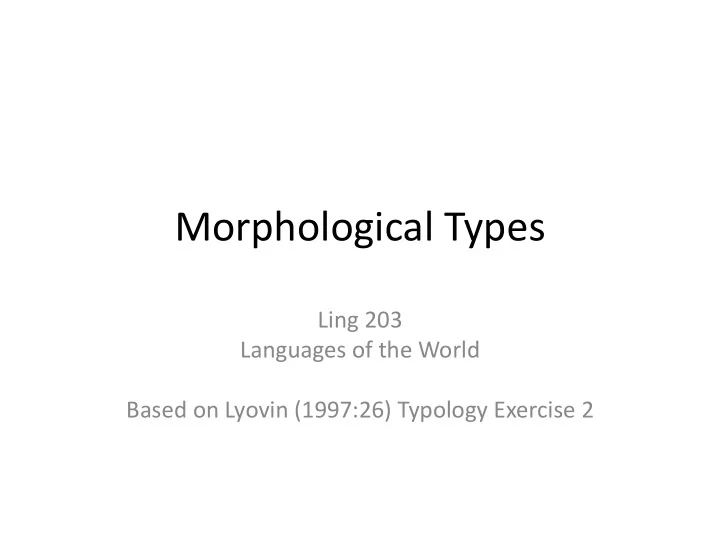

Morphological Types Ling 203 Languages of the World Based on Lyovin (1997:26) Typology Exercise 2
Morphological Types • isolating • agglutinating • fusional • polysynthetic
(based on Lillooet Salish) What type of language is this morphologically? tuxp- elic’e - ʔen - c ̆ -es ̆ buy-clothing.TR-1.SG.OBJ-3.SG.SUBJ.TR ‘He bought me some clothes.’ TR = transitive 1,2,3 = 1 st ,2 nd ,3 rd person SG = singular Subj = subject Answer: Polysynthetic OBJ = object
Quechua What type of language is this morphologically? ‘ ika-y-ku-man-lya pʺawa -sa-n-ku- c ̆ u flower-1.SG-PL-to-also fly-PROG-PRES-PL-Q ‘Are they flying to my flowers also?’ 1,2,3 = 1 st ,2 nd ,3 rd person SG = singular PL = plural PROG = progressive Answer: Agglutinating PRES = present Q = question
Samoan What type of language is this morphologically? ua alu le teine i le fale- ma’i PERF go the girl to the house-sick ‘The girl has gone to the hospital.’ * fale and ma’i can be independent words PERF = perfective Answer: Isolating
Nepali What type of language is this morphologically? y-as khol- ā māthi sā̃ gh-u thi-yo that-OBL river-OBL across bridge-NONOBL.M be.PST-3.SG.PRET.IND ‘Across that river there was a bridge.’ OBL = oblique NONOBL = non-oblique M = masculine PST = past Answer: Fusional 1,2,3 = 1 st ,2 nd ,3 rd person SG = subject PRET = preterite IND = indicative
Recommend
More recommend